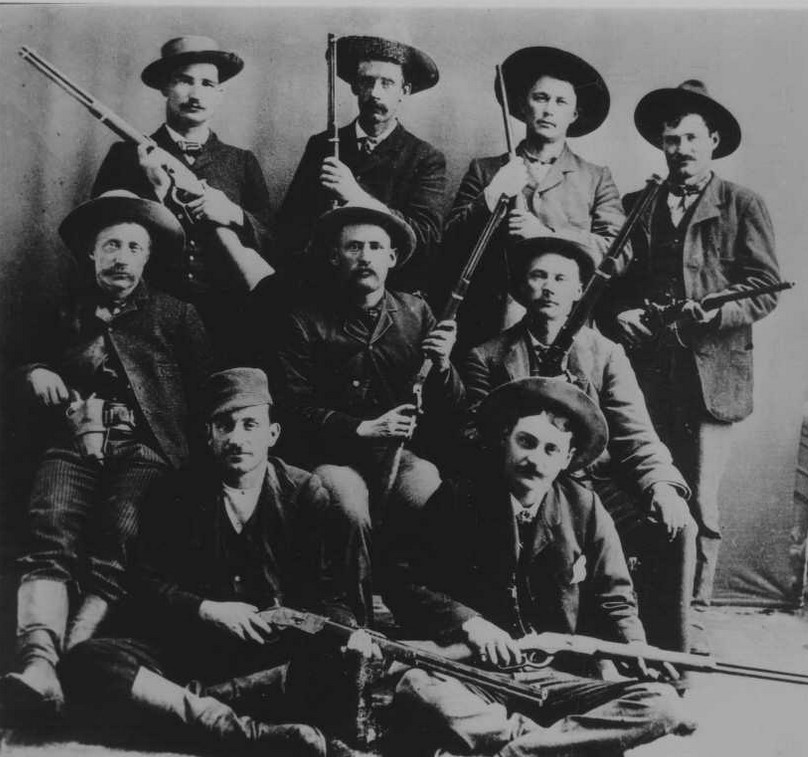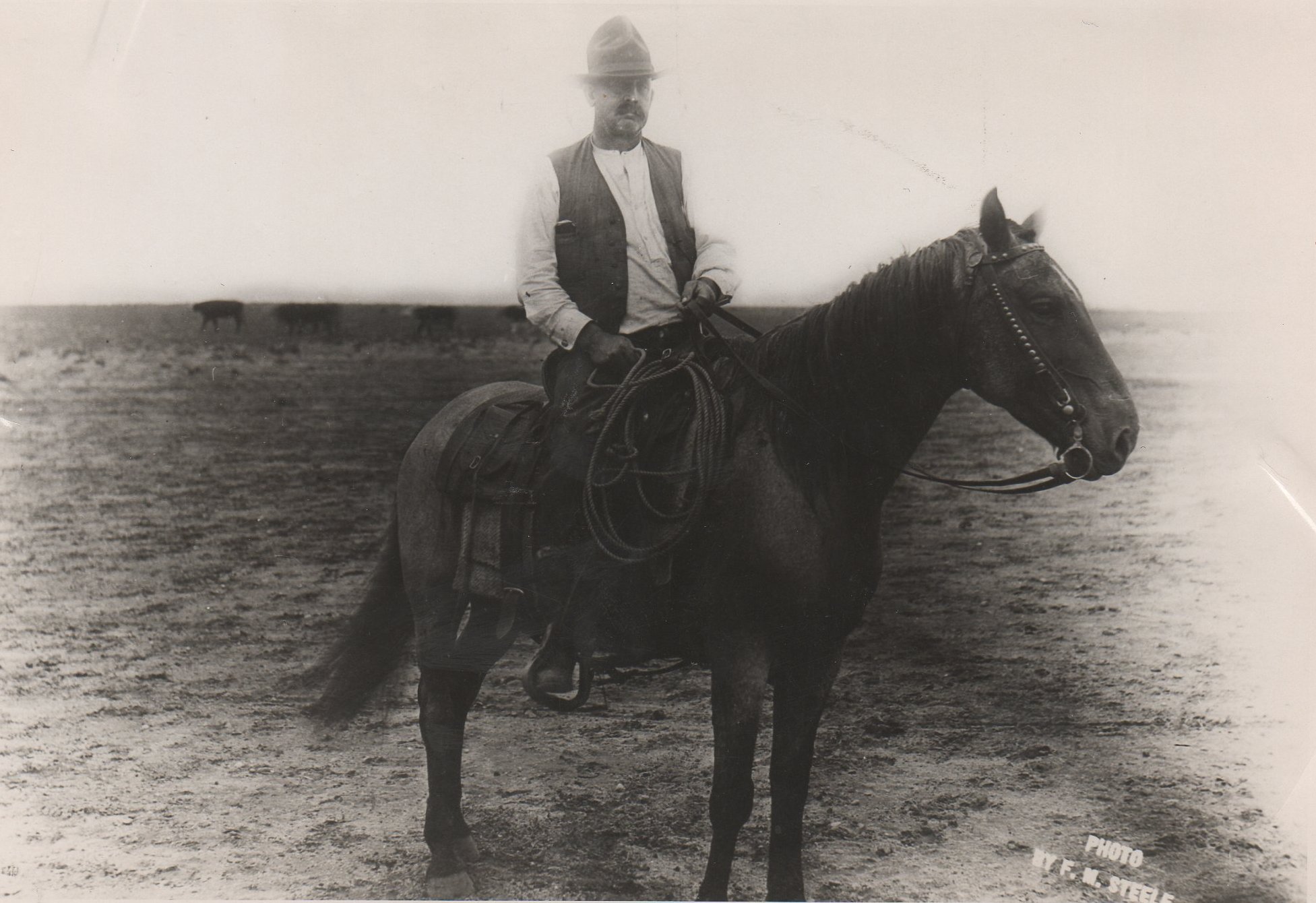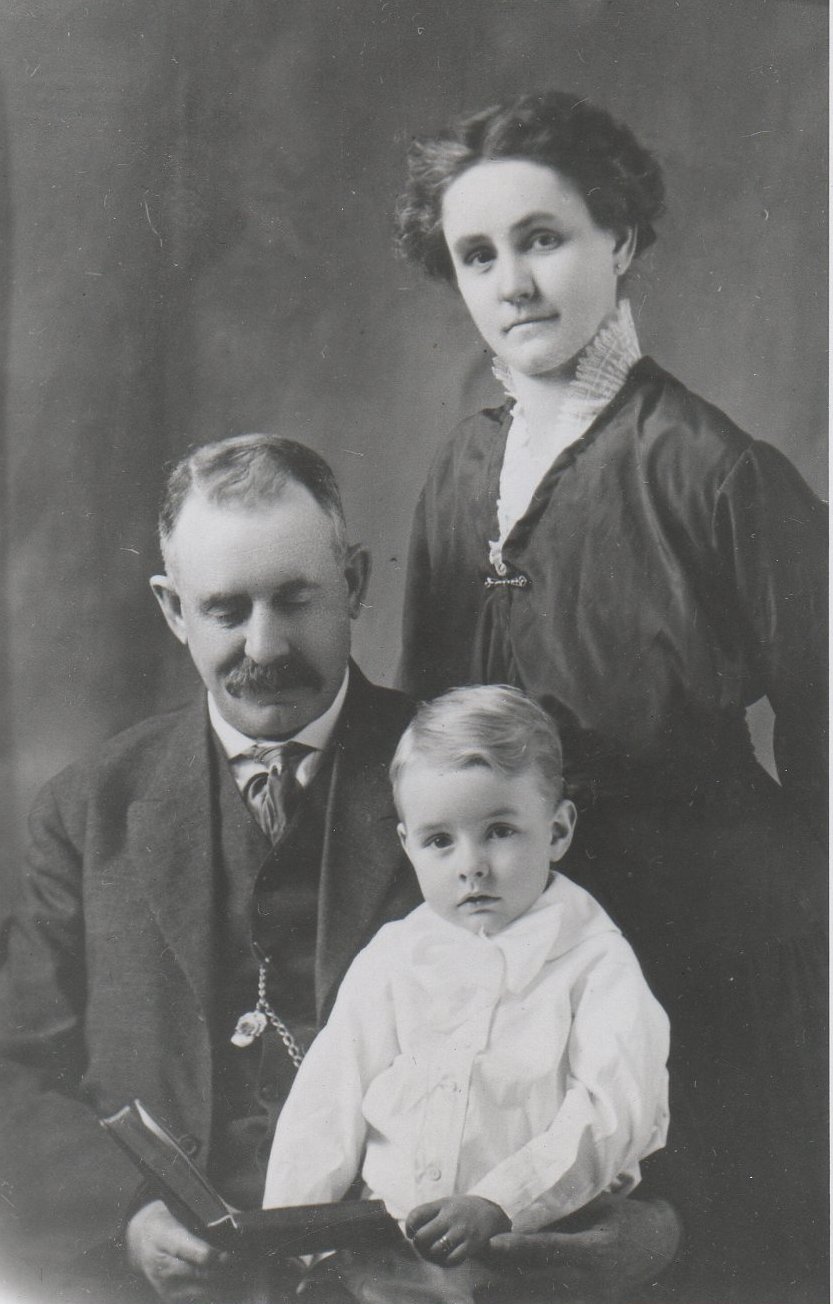Barney O’Connor was quite the character. The Canadian-born Irishman had already lived a colorful life before his arrival in Kearny County. One of 10 children, he moved with his family from Canada to Lincoln, Nebraska in 1870, and soon found his way to Kansas where he secured work as a cowboy. He was the first boy to ride horseback between Wichita and Medicine Lodge, accomplishing the difficult and dangerous feat in 1871 at the tender age of 14. That same year, O’Connor went to Matagorda, Texas, and drove a herd of cattle back to Newton which was at that time the terminus of the Santa Fe Railroad.
Barney eventually hired on as a pony express rider on the old Hutchinson-Medicine Lodge trail, and in 1874, he played a major role in one of the last Indian battles of Kansas. He started out early one morning on his regular route but had travelled only a few miles when he sighted a large war party of Indians camped on Sand Creek. Barney raced to Medicine Lodge to give warning then led a troop of 35 mounted soldiers back to where he had spotted the encampment.
In the spring of 1884, O’Connor organized a posse of men to chase down four men who had attempted to rob the Medicine Lodge bank and killed the bank president and cashier in the process. The gang of criminals was led by the very jaded Henry Brown, city marshal of Caldwell, Kansas, and his deputy, Ben Webster. With Barney at the helm, the posse pursued the gang with shots flying all the while until they cornered the would-be robbers in a canyon about eight miles west of Medicine Lodge. The gang was taken to the jail at Medicine Lodge, but an angry mob broke them out of jail and hung them, including Marshal Brown who was killed while trying to run away. As a memento of the escapade, O’Connor took a time piece from one of the assailants and a Winchester rifle from another. The watch, which did not belong to the criminal who was wearing it, led to Barney being arrested about 11 years later when it was spied upon his wrist.

Later in 1884, O’Connor proved up a claim north of Lakin where he engaged in cattle raising and farming. He and Frank McAlister, a pal from the Medicine Lodge area, established Parlor Livery Feed and Sale Stable, and many of their horses were used for the mail hacks in an area of Western Kansas from Wallace to Hugoton which was known as Hugo at the time. O’Connor was also president of the Northwestern Stage line.
Soon, Barney was appointed as Undersheriff of Kearny Township of Finney County. In January of 1886, he was shot while helping a deputy United States marshal bring in a suspected horse thief by the name of Al McClure. McClure was wanted in Montana Territory and was working on a ranch on Bear Creek when O’Connor and the marshal went to bring him in. O’Connor knew McClure and thought he could be trusted so he didn’t handcuff the suspect. All three men were in a buggy riding back to town when McClure grabbed O’Connor’s revolver from his hip pocket and aimed it at the marshal’s head. Barney sprung into action, and the bullet intended for the marshal hit O’Connor’s left arm just above the elbow. A scuffle ensued, but McClure was finally secured and brought to Lakin without further ado. In December of 1886, Barney received the appointment as Deputy United States Marshall.
O’Connor also took a prominent part in the Kearny County seat battle after Hartland cowboys stole the records from Lakin, strapping on his guns and riding to Hartland with Tommy Morgan to retrieve the county books. Six-shooter in hand, O’Connor stood over the election judges while votes were counted in February of 1889.
In the spring of 1889, Barney and his family left for Hutchinson, but the nomadic Irishman was not one to let the grass grow beneath his feet. Eventually, the O’Connor family relocated near Boise, Idaho. In 1892, a herd of 4,000 steers were shipped from Flagstaff, Arizona to Wyoming where Barney took over and drove the cattle overland more than 800 miles to Saskatchewan, Canada. By the mid 1890’s, O’Connor was back in central Kansas but became entrenched in legal woes for peddling liquor. Next, he made his way to Kansas City, Missouri where he operated a livery stable, but O’Connor returned to Lakin in 1904 and located in the sandhills. In 1909, he moved to Garden City. In 1911, Barney purchased the 1,700-acre Pig Pen Ranch on the Cimarron River in northeast Grant County which had been originally established by fellow Irishman and Lakin’s founding father, John O’Loughlin. O’Connor’s holdings grew to more than 6,000 acres.

In 1924, Barney suffered a stroke which left him almost helpless, and nine years later he died at his Garden City home on the corner of Seventh and Chestnut streets. The Lakin Independent wrote that “O’Connor’s life was filled with experiences that would have filled many a Wild West novel, and which would have eclipsed those of many a frontiersman who was less reticent about his experiences.” It was said that Barney traveled all over the country from Old Mexico to Canada on horseback with nothing but a gun and a pair of boots.
Bernard H. O’Connor was buried at Valley View Cemetery in Garden City, and beside him rest the remains of three young sons. Daniel died at the age of 18 months and was Barney’s firstborn with first wife, Mercy Catherine Young. Bernard Young, also born of his marriage with Mercy, was struck and killed by a train at Walla Walla, Washington when he was 11. Bernard Keroher O’Connor, the first child of Barney and his second wife, Dove Agnes Keroher, died at 5 months of age. Barney had four other sons: Patrick, Michael and James with his first wife, and Collins with his second. The large yellow house on the corner of Kansas Street and Russell Road in Lakin was originally the O’Connor home.

SOURCES: Conquest of Southwest Kansas by Leola Howard Blanchard; History of Kearny County Vol. 1; Find a Grave; Ancestry.com; and archives of The Helena Star, Wichita Star, Wichita Daily Eagle, Garden City Irrigator, Kearny County Advocate, The Lakin Investigator, Pioneer Democrat, and Lakin Independent.
